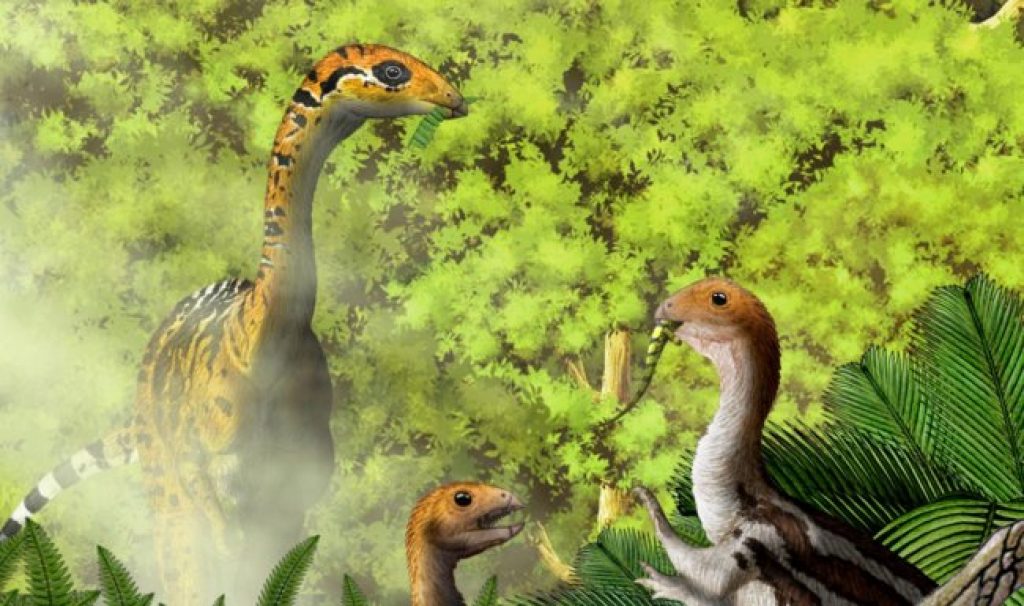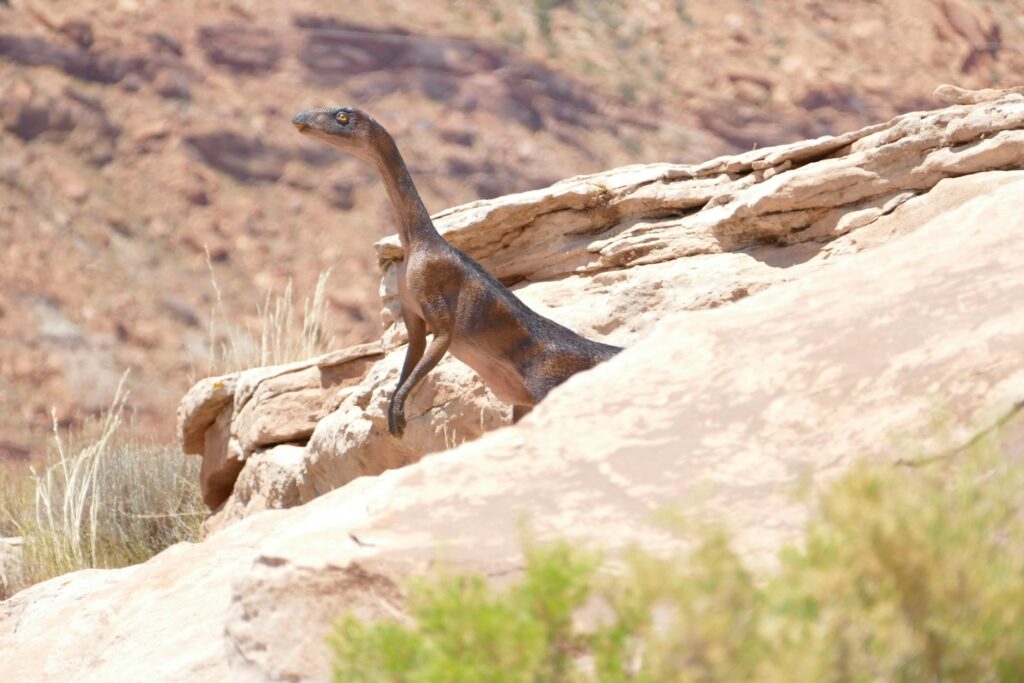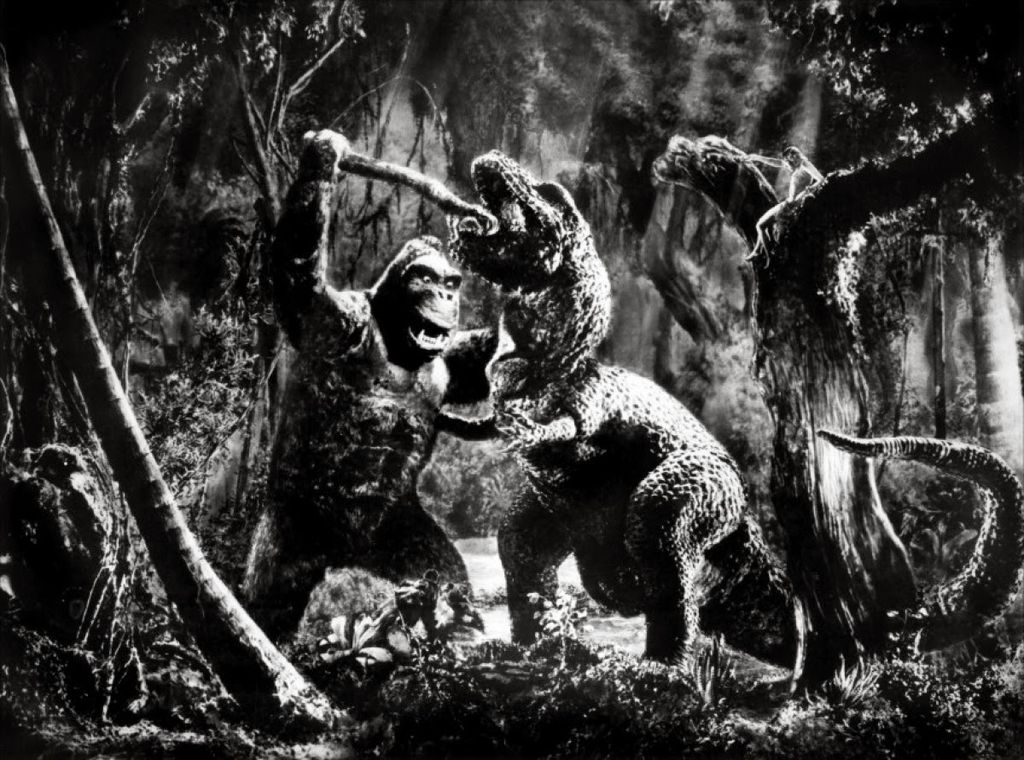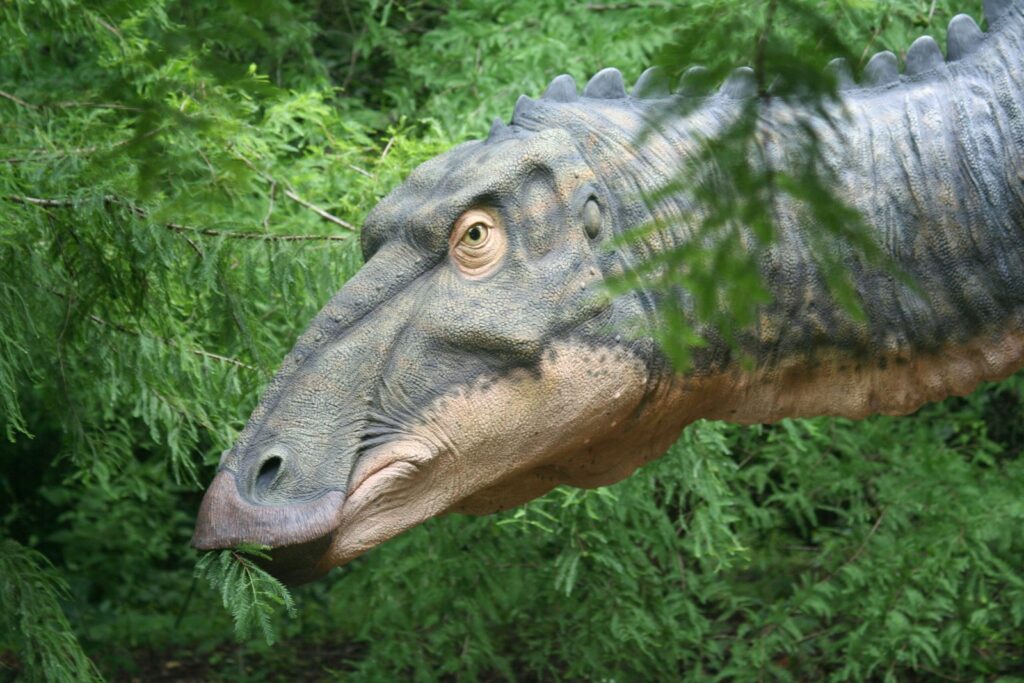For decades, dinosaurs have been portrayed in popular culture as lumbering, dim-witted creatures whose brains struggled to control their massive bodies. This perspective, however, has undergone significant revision as paleontological discoveries and advanced technologies have provided new insights into dinosaur neuroanatomy. Modern research suggests that many dinosaur species possessed cognitive abilities far more sophisticated than previously believed.
By examining fossil evidence, comparing brain-to-body ratios, and utilizing comparative neurology with modern relatives like birds, scientists are piecing together a more nuanced understanding of dinosaur intelligence. This article explores the fascinating world of dinosaur cognition and asks: Were these ancient reptiles significantly smarter than we’ve given them credit for?
The Evolution of Dinosaur Brain Research

Early paleontologists working in the 19th and early 20th centuries had limited tools for studying dinosaur brains. They relied primarily on endocasts—natural or artificial molds of brain cavities—which provided only rough approximations of brain size and structure. These primitive methods led to the widespread belief that dinosaurs possessed minimal intelligence.
The infamous “second brain” hypothesis emerged during this period, suggesting that some dinosaurs had a neural ganglion in their hips to help control their lower bodies—an idea now largely dismissed by modern science. Contemporary research employs sophisticated technologies like CT scanning and 3D modeling to create detailed visualizations of brain cases, revealing previously undetectable neural structures and providing more accurate assessments of brain morphology and potential cognitive capabilities.
Encephalization Quotient: Measuring Dinosaur Intelligence

Scientists use encephalization quotient (EQ)—a measure comparing brain size to expected brain size based on body mass—to estimate relative intelligence across species. While mammals typically have higher EQs than reptiles, certain dinosaur groups show surprisingly high values. Troodontids, small carnivorous theropods, possessed EQs comparable to those of modern birds and some mammals, suggesting enhanced cognitive abilities.
Tyrannosaurus rex, despite its fearsome reputation as a brute predator, had an EQ higher than many contemporary reptiles, indicating potential for complex behaviors beyond simple instinct. These measurements, while imperfect, provide compelling evidence that at least some dinosaur lineages evolved neural architecture capable of supporting sophisticated problem-solving, spatial awareness, and possibly social behaviors that would have required significant cognitive processing.
The Avian Connection: Birds as Living Dinosaurs

Modern birds are not merely related to dinosaurs—they are dinosaurs, specifically descendants of theropod dinosaurs that survived the mass extinction event 66 million years ago. This evolutionary relationship provides a crucial window into potential dinosaur cognitive abilities. Today’s birds demonstrate remarkable intelligence, with corvids (crows and ravens) and parrots showing tool use, complex problem-solving, self-recognition, and even rudimentary language skills.
These abilities stem from neural architecture inherited from their dinosaur ancestors, suggesting that similar cognitive capabilities may have existed in their evolutionary predecessors. The highly folded brain structure found in modern birds, which maximizes neural tissue in a small space, has also been identified in certain dinosaur endocasts, particularly among maniraptoran theropods—the direct ancestors of birds—indicating potential for comparable intelligence in these prehistoric relatives.
Sensory Capabilities and Their Neural Implications

Brain structure reveals crucial information about sensory processing and cognitive specialization in dinosaurs. Many predatory dinosaurs possessed enlarged olfactory bulbs, suggesting a sophisticated sense of smell, possibly used for tracking prey over long distances. Vision-oriented species like Velociraptor showed expanded optic lobes, indicating acute visual processing that would have been advantageous for hunting and environmental navigation.
Some hadrosaurs (duck-billed dinosaurs) had expanded auditory regions, potentially enabling complex vocal communication within their herds. These specialized sensory adaptations required significant neural processing power and suggest that dinosaur brains evolved specific regional enhancements to support their ecological niches and lifestyles, much as modern animals show neural specializations aligned with their environmental challenges and behavioral needs.
Troodontids: The Einsteins of the Dinosaur World

Troodontids stand out as potentially the most intelligent dinosaur family, with brain-to-body ratios comparable to those of modern birds. These small, carnivorous dinosaurs possessed large, forward-facing eyes, suggesting depth perception, indicating they were likely active predators that relied on vision rather than smell for hunting. Their enlarged cerebral hemispheres point to enhanced cognitive processing, possibly including complex problem-solving abilities.
Stenonychosaurus (formerly called Troodon) had an estimated EQ six times higher than typical reptiles of similar size, approaching values seen in modern birds of prey. Fossil evidence suggests these dinosaurs had enhanced manual dexterity with opposable digits, potentially allowing for manipulation of objects in ways that would have required significant neural coordination and spatial reasoning—abilities that imply intelligence beyond basic instinctual behaviors.
Social Dynamics and Cognitive Requirements

Fossil evidence increasingly suggests many dinosaur species lived in complex social groups, a lifestyle that typically demands higher intelligence. Trackway discoveries show multiple individuals of the same species traveling together, while nesting sites with communal arrangements indicate coordinated parental care in species like Maiasaura, whose name literally means “good mother lizard.”
Hadrosaur bone beds containing thousands of individuals suggest massive herds that would have required social hierarchies and communication systems to function effectively. These social structures parallel those seen in modern elephants, primates, and cetaceans—all mammals recognized for their high intelligence. The cognitive demands of group living, including individual recognition, status tracking, and coordinated behaviors, likely selected for enhanced neural processing in social dinosaur species, suggesting levels of intelligence far beyond the “lizard brain” stereotype.
Dinosaur Communication: Evidence for Complex Signaling

The elaborate crests, frills, horns, and color patterns found in many dinosaur species likely served communication purposes that would have required significant brain power to process and respond to appropriately. Lambeosaurine hadrosaurs possessed hollow head crests that functioned as resonating chambers, potentially producing distinctive calls for individual or species recognition within large herds. CT scans of these structures reveal complex internal anatomy that suggests sophisticated vocalization capabilities.
Ceratopsians like Triceratops displayed massive frills and horns that, while partially defensive, likely evolved through sexual selection as display structures—a process that typically requires neural capacity for assessing subtle differences between potential mates. Recent studies of preserved dinosaur skin and feathers indicate complex coloration patterns that may have facilitated species recognition, territorial displays, or mating signals, all requiring visual processing abilities more advanced than those found in typical reptiles.
The Cerebellum: Coordination Beyond Size

The dinosaur cerebellum—responsible for motor coordination, balance, and spatial navigation—shows adaptations that suggest cognitive sophistication beyond mere physical control. In bipedal theropods, the cerebellum was proportionally larger than in quadrupedal dinosaurs, reflecting the complex balance requirements of two-legged locomotion. Endocasts from smaller, agile predators like dromaeosaurids reveal highly developed cerebellar structures that would have enabled precise movements necessary for pursuing and capturing prey. This neural development contradicts the old notion of dinosaurs as clumsy, uncoordinated animals.
The cerebellum also plays important roles in learning and timing in modern animals, suggesting dinosaurs with well-developed cerebellums may have possessed capabilities for procedural learning—the ability to refine behaviors through practice—and perhaps even primitive forms of problem-solving that integrated motor skills with environmental assessment.
Nesting Behavior and Parental Care

Evidence of sophisticated nesting behaviors and parental care among many dinosaur species suggests cognitive abilities significantly beyond those of typical reptiles. Fossilized nests show carefully constructed architecture with eggs arranged in precise patterns, indicating intentional design rather than simple instinctual egg-laying.
Maiasaura nests contain remains of hatchlings at different growth stages, suggesting extended parental care and provisioning of young in the nest—behaviors requiring memory, planning, and social bonding. Oviraptor specimens have been found fossilized while brooding their eggs, positioning their bodies to maximize egg coverage without crushing them—a behavior requiring spatial awareness and careful body control.
These parenting behaviors parallel those of modern birds and suggest neural capabilities for long-term memory, individual offspring recognition, and complex maternal or paternal responses that would have required significant cognitive processing beyond what many contemporary reptiles demonstrate.
Predator-Prey Dynamics and Strategic Hunting

Fossil evidence increasingly suggests that many predatory dinosaurs employed complex hunting strategies requiring significant cognitive abilities beyond instinctual pursuit. Trackway discoveries show dromaeosaurids like Deinonychus hunting in coordinated packs to take down prey much larger than themselves, a behavior requiring communication, role allocation, and real-time tactical adjustments. Tooth marks on herbivore fossils sometimes indicate precision targeting of vulnerable body regions, suggesting knowledge of prey anatomy and strategic attack planning rather than random biting.
Some predatory dinosaurs show adaptations for ambush hunting—combining excellent depth perception, camouflage coloration, and the neural architecture needed to remain motionless before explosively accelerating. These complex hunting behaviors mirror those seen in modern apex predators like wolves and big cats, animals recognized for their problem-solving abilities and tactical thinking, suggesting comparable cognitive capabilities in their dinosaurian counterparts.
Reevaluating “Primitive” Dinosaur Groups

Even dinosaur groups traditionally considered less intelligent are being reassessed in light of new discoveries. Sauropods, the long-necked giants once thought to possess minimal brainpower, show evidence of complex behaviors that would have required more sophisticated neural processing than previously acknowledged. Despite their tiny brains relative to body size, sauropods developed intricate nesting colonies, engaged in herd behaviors with age segregation, and navigated across vast territories—activities suggesting spatial memory and social coordination.
Ankylosaurs, heavily armored herbivores, possessed unexpectedly large olfactory bulbs indicating sophisticated sense of smell that may have been used for detecting predators or locating specific food sources at considerable distances. Stegosaurs, famous for their supposedly “walnut-sized brains,” actually had neural structures specialized for their ecological niche, with evidence of specialized sensory processing that would have supported their survival in Jurassic environments despite their overall small brain-to-body ratio.
Modern Technology Revealing Ancient Minds

Cutting-edge technologies are revolutionizing our understanding of dinosaur neuroanatomy and cognitive potential. High-resolution CT scanning now allows paleontologists to examine the internal structure of fossilized braincases without damaging specimens, revealing previously undetectable neural pathways and brain regions. Advanced computer modeling can reconstruct blood vessel patterns within the brain, indicating which regions received the greatest blood supply and were thus metabolically active—a key indicator of functional importance.
Synchrotron radiation analysis permits examination of fossilized neural tissues at the microscopic level, occasionally preserving actual cellular structures that provide direct evidence of brain organization. 3D printing of endocasts creates tangible models that scientists can manipulate and study from all angles, facilitating comparative analysis across species. These technological advances continue to push back against the persistent stereotype of the “dinosaur brain” as primitive, revealing instead a complex evolutionary story of neural adaptation and specialization across different dinosaur lineages.
The Future of Dinosaur Neuroscience

The field of dinosaur neuroscience stands at an exciting frontier, with multiple promising research directions emerging. Comparative studies between dinosaur endocasts and the brains of their living relatives—birds and crocodilians—continue to refine our understanding of neural evolution across the archosaur lineage. Developmental biology insights from modern species help paleontologists infer how dinosaur brains grew and specialized from hatchling to adult.
New fossil discoveries, particularly from sites with exceptional preservation like those in China’s Liaoning Province, regularly yield specimens with preserved soft tissues that may eventually include actual brain matter. Techniques borrowed from forensic science are being adapted to analyze trace elements in fossil bones that could indicate metabolic rates—a factor closely tied to brain function and potential intelligence.
As these and other investigative methods advance, our perception of dinosaur cognitive abilities will likely continue shifting toward recognition of their complex and varied intelligence, challenging long-held assumptions about these fascinating ancient creatures.
Conclusion

The evidence increasingly suggests that dinosaurs possessed a range of cognitive abilities far more sophisticated than the sluggish, dim-witted stereotypes that dominated early paleontology. From the problem-solving capacities of troodontids to the social intelligence of herding hadrosaurs, dinosaurs evolved diverse neural adaptations suited to their ecological niches and behavioral needs.
While we may never fully understand the subjective experience of a Velociraptor or the social dynamics of a Triceratops herd, modern science continues to unveil a picture of dinosaur cognition that demands respect for their evolutionary achievements. These weren’t simple creatures living on instinct alone, but complex animals with specialized intelligence that helped them dominate Earth’s ecosystems for over 160 million years.
In reassessing dinosaur intelligence, we gain not only a more accurate understanding of prehistoric life but also valuable insights into the evolution of cognition itself—a story in which dinosaurs, including their avian descendants, play a central and continuing role.




